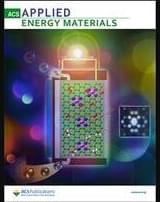The electrocatalytic nitric oxide reduction reaction (NORR) has attracted significant attention as an ecofriendly alternative to the conventional Haber–Bosch process for producing ammonia (NH3). However, the poor selectivity to NH3 and low catalyst stability under harsh conditions are great challenges in NORR. Herein, the core–shell structure of nickel nanoparticles enclosed with a nitrogen-doped carbon layer (Ni@NC) electrocatalyst derived from covalent organic frameworks is employed for high performance in NORR. The Ni@NC-700 achieved the highest FENH3 of 82.94% with an NH3 yield rate of 19.00 μmol cm–2 h–1 at 0.16 V (vs reversible hydrogen electrode) in a 0.1 M HClO4 electrolyte. Control experiments revealed that nickel nanoparticles (Ni NPs) acted as active centers in Ni@NC for efficient production of NH3. The ideal carbon shell protection of Ni NPs and the high inherent catalytic TOF of Ni@NC-700 revealed a promising candidate for an efficient NORR electrocatalyst. The stability test demonstrated the remarkable stability of Ni@NC. The Ni NPs were protected by carbon nanostructures resembling core–shell catalysts, preventing metal dissolution during rough electrolysis.
